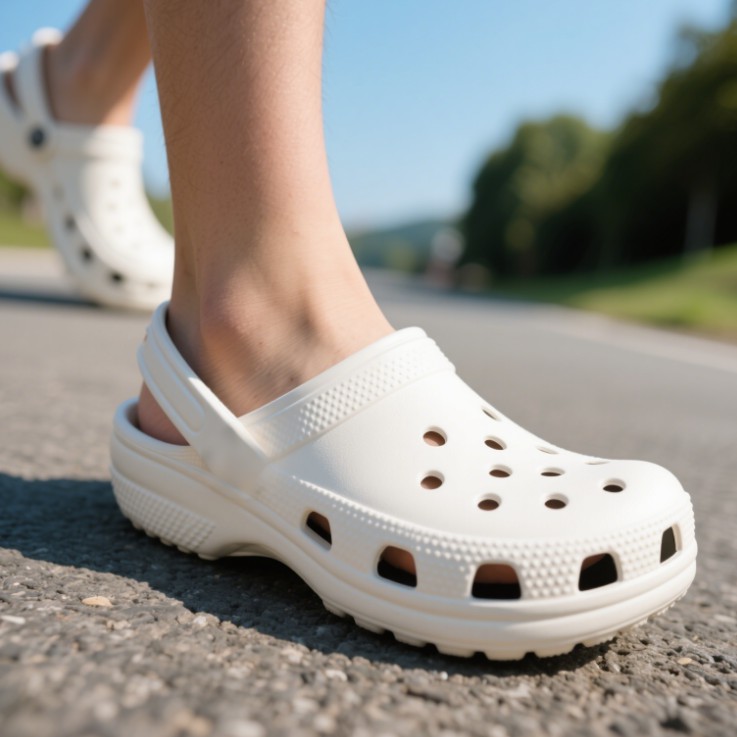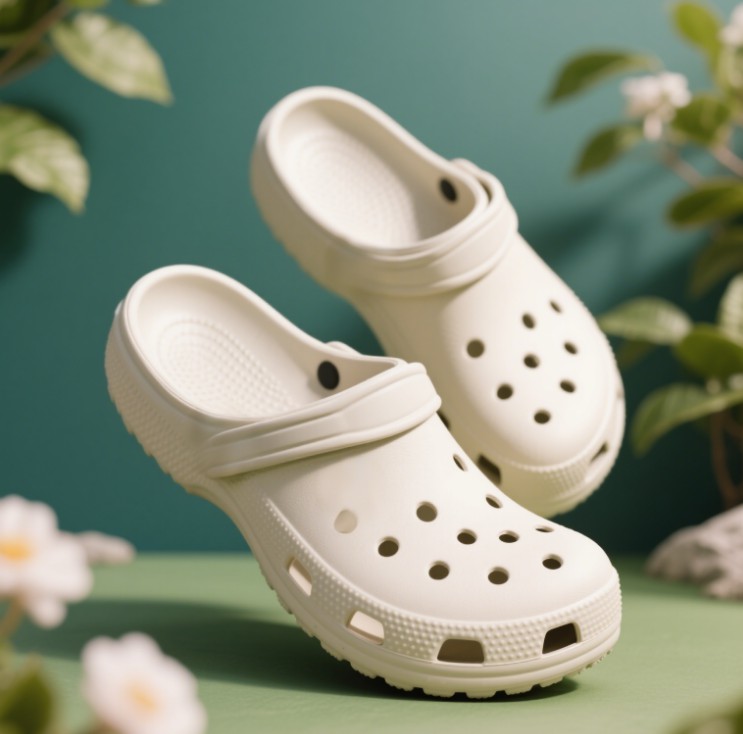It was just after 4 a.m. when Dr. Lena Park sank into the bench outside the hospital’s staff entrance. The night shift had finally ended—twelve relentless hours of moving between ER beds, checking charts, dodging code blues, and barely sitting down. Her scrubs were rumpled, her ponytail had come loose hours ago, but her feet? Still surprisingly okay.
She looked down at the pale blue clogs that had become her unofficial uniform. Light, vented, and—dare she say—oddly cute, they didn’t exactly scream high fashion. But they did something better: they survived the shift with her.
Across town, at that same hour, Chef Mateo was prepping for the breakfast rush. The kitchen was just waking up—stoves clicked to life, knives hit cutting boards, and pans sizzled with the first eggs of the day. Mateo moved with practiced precision, his black apron tied tight and his hands already working. His shoes, dark rubber clogs with barely visible scuffs, were as much a part of his ritual as his favorite chef’s knife.
It might seem strange at first, this quiet loyalty professionals had to a shoe that looked like something from a cartoon. But in the real world—especially one with slippery floors, 12-hour shifts, and never-ending movement—form follows function. And function is everything.
Lena hadn’t always worn clogs. In medical school, she’d tried everything—sneakers that looked athletic but had no arch support, cheap flats that gave her blisters, even a pair of trendy slip-ons that claimed to be “ergonomic.” None lasted a full shift. It wasn’t until a senior nurse casually asked her, “Have you tried clogs yet?” that her relationship with footwear changed.
At first, she resisted. Clogs reminded her of gardening or, worse, touristy beachwear. But one trial later, she was hooked.

“They just… work,” she explained one day to a new intern complaining about sore feet. “They’re easy to clean, super lightweight, and weirdly bouncy. Like walking on air, if air had memory foam.”
For Mateo, it was a similar journey. Years ago, as a line cook hustling in a cramped, chaotic kitchen, he learned the hard way that regular shoes didn’t cut it. Oil splatters, water spills, dropped knives—his footwear had to be more than stylish. It had to be armor.
“You don’t think about shoes until your soles start screaming halfway through brunch,” he joked. “Now, these clogs? They’re non-slip, water-resistant, and if I drop a sauté pan on my foot, it won’t break a toe.”
There’s also the hygiene factor. In both hospitals and kitchens, spills are part of the job—blood, soup, cleaning agents, you name it. Clogs, especially those made of EVA or similar synthetic materials, are a dream in that respect. Wipe them down, rinse them off, and they’re good as new. No soggy canvas. No lingering smells.
The ventilation holes—once the butt of many fashion jokes—serve a very real purpose. In hot environments where feet sweat nonstop, airflow is a gift. And for anyone who’s spent hours standing in one spot, that coolness matters.
But beyond the practicality, something else happens with these clogs. They start to become… personal. Nurses decorate them with charms. Chefs swear by specific colors or brands. Some get attached to their favorite pair like they would to a well-worn hoodie—ugly, perhaps, but comforting and trustworthy.
Fashion purists may still roll their eyes. But the shift is undeniable. These shoes have crept out of hospitals and kitchens and into streetwear, embraced by celebrities, stylists, and designers who once mocked them. Maybe it’s irony, maybe it’s rebellion—but maybe, just maybe, it’s an appreciation of comfort finally winning the battle over image.
Back on that hospital bench, Lena finished her coffee and stood up, already bracing for the morning rounds ahead. As she stepped back through the doors, her clogs squeaked faintly against the polished floor, a quiet reminder that even in chaos, some things just work.
And in the heart of a hot kitchen, Mateo plated the last dish of the breakfast service. He wiped his hands on a towel, glanced down at his shoes, and smiled. They weren’t flashy, but they’d carried him through another rush. Just like always.
In a world obsessed with trends, clogs have earned their place not through hype, but through hard work. For doctors, chefs, and countless others on their feet all day, they’re not just shoes—they’re trusted partners. Odd-looking? Maybe. But when comfort, safety, and sanity are on the line, holey shoes might just be holy.
